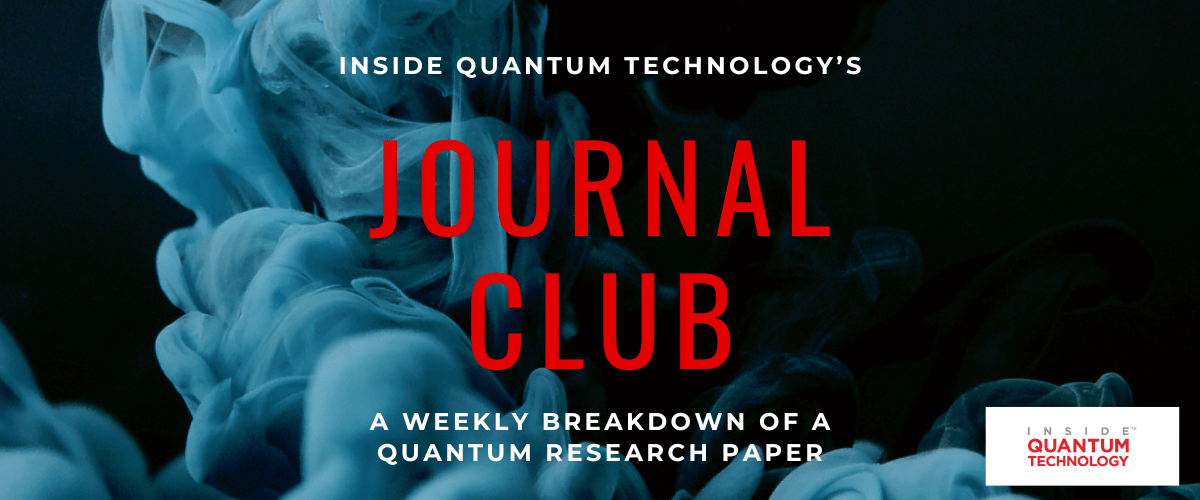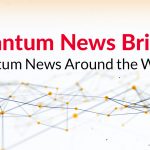IQT’s “Journal Club:” A Look at Two-Qubit Entangling Gates for Superconducting Quantum Computers

IQT’s “Journal Club” is a weekly article series that breaks down a recent quantum technology research paper and discusses its impacts on the quantum ecosystem. This article discusses a recent paper published in Results in Physics by researchers at various Middle Eastern institutes looking at superconducting quantum computers with two-qubit entangling gates.
While many different types of quantum computers are being developed, superconducting quantum computers are of particular interest to many companies due to their predicted advantages of scalability, higher fidelity, and longer coherence times. Superconducting quantum computers use circuits made from superconducting materials to create qubits. These qubits can exist in a state of 0, 1, or any quantum superposition of these states, allowing them to perform complex calculations much more efficiently than classical computers in certain scenarios.
To further understand the mechanics of building a superconducting quantum computer, researchers Muhammad AbuGhanem and Hichem Eleuch, whose associations are to various Middle Eastern institutes, presented a comprehensive analysis of a two-qubit entangling gate, termed the Dagwood Bumstead (DB) gate, in the context of noisy intermediate-scale quantum (NISQ) computers. “Dagwood Bumstead” refers to an American cartoon character. The researchers published their findings in Results in Physics.
A Dive into Two-Qubit Entangling Gates
These computers, particularly those based on superconducting qubits, have shown superior performance compared to classical computing schemes. However, they face significant challenges due to errors in two-qubit entangling gates, which are crucial for creating entangled states necessary for quantum computation.
The DB gate is investigated in this study for its potential to execute complex algorithms on quantum computers, especially those utilizing superconducting qubits. The gate was realized using two capacitively coupled Josephson Superconducting qubits based on an experimental setup from a previous study. The researchers conducted a detailed characterization of the DB gate using quantum process tomography (QPT) and quantum state tomography (QST) in various environments: noiseless, noisy, and on an actual IBM quantum computer.
The DB gate’s performance was evaluated through these tomography experiments, revealing an average gate fidelity of 0.85450, with process fidelity measured at 0.8069705 and state fidelity at 0.8858750. These results are significant as they offer insights into the gate’s functionality in different quantum environments, highlighting the challenges and potential of the DB gate in NISQ devices.
The Impacts on Superconducting Qubits
This study is critical in understanding the limitations and capabilities of NISQ devices, particularly in the realm of superconducting qubits. The findings underscore the importance of addressing errors in two-qubit entangling gates to exploit the computational power of quantum computers fully. The successful implementation and analysis of the DB gate represent a step forward in developing scalable quantum computing architectures, potentially leading to more efficient quantum computations that surpass classical methods in solving complex problems.
By advancing the understanding and performance of two-qubit entangling gates, this work contributes to addressing one of the major hurdles in the development of reliable quantum computers. Improved two-qubit gates directly enhance the fidelity and scalability of quantum computing systems, which is crucial for transitioning from the current NISQ (Noisy Intermediate-Scale Quantum) devices to more advanced, error-resistant quantum computers. This progress can accelerate the practical applications of quantum computing in various industries, including pharmaceuticals for drug discovery, finance for complex optimizations, and cybersecurity for advanced encryption methods. Moreover, the enhanced reliability of quantum computations resulting from such research could attract increased investments and collaborations in the quantum industry, further propelling the development of quantum technologies. In essence, the paper’s findings are a technical advancement and a pivotal step that could stimulate significant growth and innovation in the quantum computing sector.
Kenna Hughes-Castleberry is the Managing Editor at Inside Quantum Technology and the Science Communicator at JILA (a partnership between the University of Colorado Boulder and NIST). Her writing beats include deep tech, quantum computing, and AI. Her work has been featured in Scientific American, Discover Magazine, New Scientist, Ars Technica, and more.



















